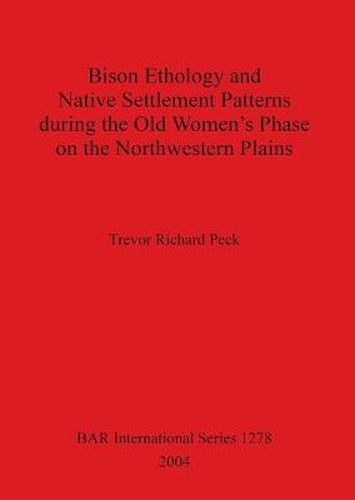Readings Newsletter
Become a Readings Member to make your shopping experience even easier.
Sign in or sign up for free!
You’re not far away from qualifying for FREE standard shipping within Australia
You’ve qualified for FREE standard shipping within Australia
The cart is loading…






This title is printed to order. This book may have been self-published. If so, we cannot guarantee the quality of the content. In the main most books will have gone through the editing process however some may not. We therefore suggest that you be aware of this before ordering this book. If in doubt check either the author or publisher’s details as we are unable to accept any returns unless they are faulty. Please contact us if you have any questions.
On the northwestern Plains of North America, most archaeologists have indicated that the movement of bison, whether seasonal or otherwise, influenced the movements of the Native people. Most researchers have argued that bison spent the summer on the plains but, as cooler weather approached, they sheltered themselves in the parkland, river valleys, and wooded uplands. The movement of Native people was expected to parallel that of the bison. Yet, some researchers persist in their convictions that bison were erratic and unpredictable in their movements. Still other researchers have argued that large-scale movements did not occur and bison were numerous on the plains throughout the year. Thus, Native people could only procure bison based on an ‘encounter strategy’ or by remaining in close proximity to a given herd or a ‘herd following strategy’. In contrast, the first model suggests that bison migrated in relatively predictable patterns and, thus, could be procured using an ‘intercept strategy’. To address the lack of consensus concerning bison movements and their effect of human movements this work evaluates models of bison movements by way of: 1) a review of modern understandings of bison ethology, 2) a review of historical literature, ethnographic data, and oral tradition regarding bison, and 3) the implementation of a technique (i.e., dental cementum increment analysis) used in the seasonal evaluation of modern and archaeological bison dentition.
$9.00 standard shipping within Australia
FREE standard shipping within Australia for orders over $100.00
Express & International shipping calculated at checkout
This title is printed to order. This book may have been self-published. If so, we cannot guarantee the quality of the content. In the main most books will have gone through the editing process however some may not. We therefore suggest that you be aware of this before ordering this book. If in doubt check either the author or publisher’s details as we are unable to accept any returns unless they are faulty. Please contact us if you have any questions.
On the northwestern Plains of North America, most archaeologists have indicated that the movement of bison, whether seasonal or otherwise, influenced the movements of the Native people. Most researchers have argued that bison spent the summer on the plains but, as cooler weather approached, they sheltered themselves in the parkland, river valleys, and wooded uplands. The movement of Native people was expected to parallel that of the bison. Yet, some researchers persist in their convictions that bison were erratic and unpredictable in their movements. Still other researchers have argued that large-scale movements did not occur and bison were numerous on the plains throughout the year. Thus, Native people could only procure bison based on an ‘encounter strategy’ or by remaining in close proximity to a given herd or a ‘herd following strategy’. In contrast, the first model suggests that bison migrated in relatively predictable patterns and, thus, could be procured using an ‘intercept strategy’. To address the lack of consensus concerning bison movements and their effect of human movements this work evaluates models of bison movements by way of: 1) a review of modern understandings of bison ethology, 2) a review of historical literature, ethnographic data, and oral tradition regarding bison, and 3) the implementation of a technique (i.e., dental cementum increment analysis) used in the seasonal evaluation of modern and archaeological bison dentition.